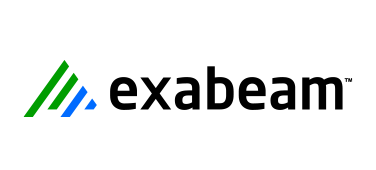
Exabeam
Exabeam
7 Open Source SIEMs: Capabilities and Constraints

Security Information and Event Management (SIEM) systems, once reserved for large enterprises only, are increasingly being adopted by medium and even small businesses. Open source SIEMs are attractive to new adopters due to their low licensing costs and ever-increasing features. What open source SIEMs are available today and how do they differ from traditional enterprise offerings?
What you will learn in this article:
- What is a SIEM
- Comparing open source SIEMs to enterprise-level SIEMs
- Limitations of open source SIEM
- Top 7 Open Source SIEM Tools
What is a SIEM
- A SIEM (Security Information and Event Management) is a security and audit system. It's not a single tool, but a "Box" of multiple monitoring and analysis components.
- A SIEM aggregates data from hundreds of security and IT tools across the enterprise and uses statistical correlation and rules to transform events and log entries into useful information. Security teams can use this information to detect real-time threats, manage forensic investigations into security incidents, organize incident responses, and prepare for compliance audits.
- SIEM is now the standard security approach. As cyberattacks continue to rise and security regulations become more stringent, many organizations are adopting SIEMs. Regulatory changes such as PCI DSS and the EU's GDPR have made it imperative to remove system and application log events from individual servers and store them securely for investigation and response.
Comparing Open Source SIEMs to Enterprise-Grade SIEMs
A SIEM is a foundational system for modern cybersecurity. Information flows represented by other security tools can be processed in SIEMs to extract value. Not all SIEMs have the same features. Choosing the right SIEM for your organization's needs can mean the difference between preventing or letting an organization avoid a catastrophic security breach.
Open source SIEM
By using open source SIEM tools, organizations can reduce software licensing costs and evaluate specific capabilities before increasing product investment. An open source SIEM solution has basic features that suit the needs of small organizations just getting started with logging and analyzing security event information.
Limitations of open source SIEM
- Open source SIEM software can require a lot of effort as your organization grows.
- Even if you save on licensing costs, there may be ongoing maintenance costs.
- Many open source SIEM solutions lack critical SIEM capabilities such as reporting, event correlation, and remote management of log collection.
- As such, you may need to combine your open source SIEM with other tools.
- Deploying an effective open source SIEM typically requires a high degree of expertise and time.
- Open source SIEMs generally lack storage and management capabilities. This is an issue to be aware of given the enormous amount of data.
Enterprise-grade SIEM
Enterprise SIEM solutions offer advanced management capabilities for the most common use cases, including configuration and installation, correlation configuration, filters, and pre-built visualizations. With such a solution, you can monitor activity in large data centers and centrally manage and configure security-related applications.
Perhaps most importantly, only enterprise SIEMs currently offer next-generation SIEM capabilities. The next-generation enterprise SIEM features two new technologies that save security teams time and dramatically improve incident detection and response.
- UEBA (User and Entity Behavior Analytics) is a further evolution of rules and correlations that leverages AI and machine learning to look at user and IT system behavioral patterns that may indicate threats. Discover high-risk anomalies.
- Security Orchestration, Automation, and Response (SOAR) is a feature integrated into enterprise systems that orchestrates systems to automate incident response processes such as mitigating malware and data exfiltration attacks. .
Top Open Source SIEM Tools
| Open source SIEM | Deployment options | Main function | constraints |
| ELK stack A collection of three open source products: Elasticsearch, Logstash, and Kibana. Use these three tools to achieve visibility and analysis of IT events. |
Virtual environments, physical hardware, private clouds, private zones within public clouds, public clouds (Google, Azure, AWS, etc.). |
|
|
| Apache Metron A product that is relatively latecomer in the industry. A security framework that combines multiple open source projects into one platform. |
Currently works with 3 data stores: HBase, HDFS and Elastic Search. |
|
|
| SIE Monster Based on open source technology. Free version and paid solutions (premium and MSSP multi-tenancy) available. |
On the cloud with Docker containers, on VMs and bare metal (Mac, Ubuntu, CentOS, Debian). |
|
|
| Prelude Integrates with various other open source tools. An open source version of the commercial tool of the same name. |
Linux, OpenBSD, FreeBSD, NetBSD, Sun/Solaris, MacOSX, Tru64 and other UNIX based systems. |
|
|
| OSSIM SIEM platform including event collection, normalization and correlation. |
On-premises physical and virtual environments. |
|
|
Comparing Open Source Benefits and Costs
Open source SIEMs have matured significantly over the last few decades and are successfully deployed by many organizations. However, it is well known that the cost of licensing is only a small fraction of the TCO of a SIEM system, even though the primary driver for adoption has been reduced licensing costs. Other components that may be larger than the SIEM itself include:
- ハードウェアとストレージには、特に中規模から大規模の企業にとって多額のコストがかかり、管理も複雑になります。
- Analyst time is the most valuable resource on most security teams and they are essential to any form of SIEM alerting.
Exabeam is a next-generation SIEM platform built on Elasticsearch as an enterprise-grade platform to solve the two problems mentioned above and address cost centers.
- Offers unlimited cloud-based storage at a fixed cost
- Dramatically reduce analyst time with next-generation SIEM capabilities such as UEBA and SOAR

ORION CASSETTO
Exabeam, Inc. Director, Product Marketing
Inquiry/Document request
In charge of Macnica Exabeam Co., Ltd.
- TEL:045-476-2010
- E-mail:exabeam-sales@macnica.co.jp
Weekdays: 9:00-17:00


